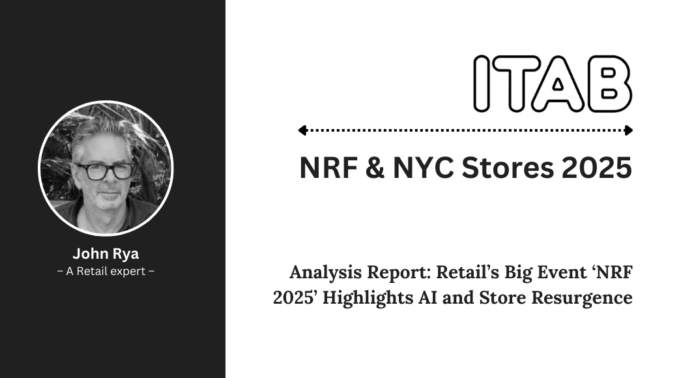NRF 2025: A Summary of Retail’s Big Event Centered on Customer Service, Customer Experience, Technology Integration and Physical Stores’ Comeback.
NRF 2025, the largest annual event in the retail world, was hosted in New York City, bringing in approximately 40,000 retailers and vendors to the Javits Center. The event focused on how AI is changing the retail space, the comeback of physical locations, and theft as an ongoing concern. The report was written by John Ryan, a retail expert at ITAB, and published on the ITAB’s website. Global Supermarket News, the trsuted international news portal of retail industry tried to analyze the report and summarize the report for our readers. Let’s drive on the report analysis summary.
Main Insights From NRF 2025
The Evolution of AI Rather Than the Revolution of AI Technology
NRF 2025 featured AI as one of the most relevant issues of the conference; however, it felt more of an evolution rather than a massive step forward. Use cases for AI are becoming sophisticated for retailers, which include:
- Self-checkout lines: AI is being utilized to identify products bought during checkout.
- Inventory issues: AI technology helps in detecting missing products on the shelves.
- Security: AI helps in loss prevention by identifying theft patterns.
- Dynamic pricing: AI can change the price of a product instantly depending on the customer’s location, age, or actions at that moment.
Certain limitations aside, retail AI solutions presented at NRF were mostly major adjustments of concepts that existed well before instead of life-changing innovations.
The Emphasis on Physical Outlets
An interesting detail from the NRF 2025 was the shift towards physical stores. The omnichannel focused on online retailing, but the shop brands placed their emphasis on the customer’s in-store experience.
This is also true for Manhattan. Stores incorporated lifestyle decor which included home fashion merged with clothing, which encouraged customers to stay longer. Retailers also seemed to be opting towards integrating traditional retail interaction with digital shopping by focusing on environment shopping rather than heavily automated displays.
The Rise of Self Service Checkouts
Self service checkouts are now a preferred method of payment. Vendors at NRF had an array of self service kiosk solutions, moving closer to a world without cashiers. Even Amazon, who used to promote shopping via an app, is now shifting to self check-out systems.
However, there is some struggle that exists with the self service checkout systems. Some consumers in North America are still strongly resistant to adopting the new systems and prefer interacting with cashiers.
Retail Theft Remains a Growing Concern
Retail crime was heavily discussed at the NRF having Target Australia and CVS healthcare resorting to excessive product locking as compared to previous years. Because of this theft mitigation approach, some stores now look like “product prisons.”
Exhibitors of NRF presented traditional physical methods of theft prevention such as guards and AI security solutions, where the use of high-profile guards is much preferred by many retailers.
Notable Store Trends from NYC
Alongside the conference, retailers from New York showcased the notable industry transforming trends:
- Whole Foods Daily Market by Amazon: A fresh food-dominated convenience store of 9100-square-foot space with 12 self-checkout terminals and less cashiers.
- Thuma (SoHo): A lifestyle furniture retailer offering immersive shopping experience through interactive store design and category-blended layout.
- Dyson on Wooster Street: A gallery store with high-tech consumer goods advertised on large digital screens, showcased in an immersive setting.
- Skims on Fifth Avenue: The glamourous flag store of Kim Kardashis’s shapewear brand that combines non-obvious retail tech with traditional offers like QR-fitting-room reservations and unassisted shopping.
- GU on Broadway SoHo: A self help, fast fashion store famous for inexpensive fashion items, the store uses autopayment tags similar to Uniqlo and RFID checkout.
The NRF 2025 predicted that the role of AI in retail will be more practical than transformational. The return of brick-and-mortar stores suggests a greater focus on the in-store experience, albeit theft continues to be a major issue. Going forward, retailers are expected to further develop technology-based solutions for operational efficiency, customer engagement as well as security issues.


